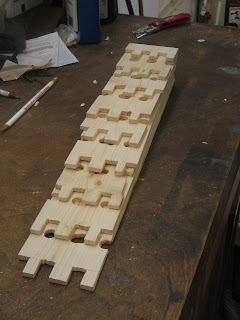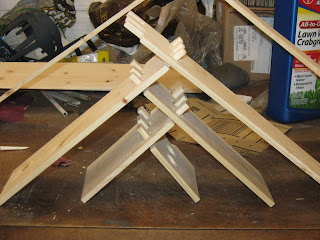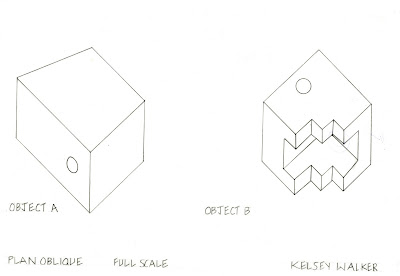System: An assemblage combination of things or parts forming a complex or unitary whole. (dictionary.com)
My system
I started out playing around in the woodshop and decided to use fingerjoints to connect my system
 18'',16'',14'',12''10'',8'',6'',4'',2''
18'',16'',14'',12''10'',8'',6'',4'',2''I cut my 2x4 into 4 peices and from there cut each board 2 in shorter than the last ending up with 9 peices ranging from 18'' to 2''. In doing this I used every peice of my 2x4.
My finger joints were 3/4'' down and from there i drilled 1/2'' holes 1 1/4'' down to connect my finger 1/2'' wide fingerjoints into to make a sturdy hold.
System of Patterns
Here and throughout my whole project you can see that my system focuses on patterns through measurements and overlapping of connections
Joining area
I feel my project is a good representation of a system of wood. One can see the patterns, which is an important part of a system. Also, one can see how i connected the wood using only fingerjoints and drilled holes that percise mearsurements to them which represents my wholes system's measurements working with 2''.
I used a good amount of the machines down in the woodshop which was an interesting experience because I had never really worked with powertools before. I found it fun once I got the hang of it and can see myself taking more trips down to the woodshop.









































